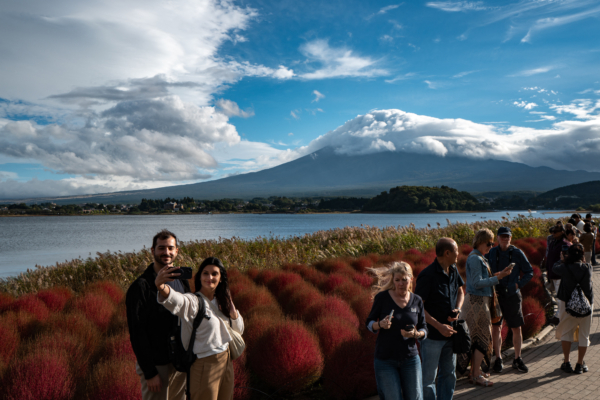The Japanese Tourism Agency (JNTO) announced on Tuesday (November 18) the latest data that in October, the number of foreign visitors to Japan reached 3,896,300, an increase of 17.6% from the same period last year, setting a new record high for the month of October. From January to October, the cumulative number of visitors reached 35,547,200, clearly indicating a trend of surpassing 40 million visitors for the whole year.
In terms of visitor sources in October, South Korea ranked first with 867,200 visitors, an increase of 18.4% from the previous year, mainly driven by additional flight services. China (excluding Hong Kong) followed with 715,700 visitors, showing a 22.8% increase. Taiwan recorded 595,900 visitors, and the United States 335,700 visitors, both setting new highs for the month of October.
Additionally, Canada, Mexico, France, Russia, and the Nordic countries also set their own records for the highest number of visitors in a single month, demonstrating a continuous increase in global travel demand and a more diverse structure of visitors to Japan.
Japanese Prime Minister Sanae Takamichi recently stated during parliamentary questioning that if there were military actions against Taiwan (such as deploying warships or using force), it could pose a “survival crisis” for Japan.
These remarks triggered a backlash from Beijing, with the Chinese Ministry of Foreign Affairs on the 14th urging Chinese citizens to “temporarily avoid traveling to Japan,” claiming that there is a “significant risk” to the personal safety of Chinese tourists in Japan.
Osaka Governor Hirofumi Yoshimura stated in a press conference on the 18th that the Chinese market poses a high “national risk,” and urged businesses not to overly rely on a single source of customers, but rather to establish a business model that can survive even if the number of Chinese tourists decreases or drops to zero.
On the same day, Naomi Onoda, Japan’s Minister for Economic Security, stated in a press conference after a cabinet meeting that China frequently uses economic measures to apply pressure, which has placed Japan at significant risks in the supply chain and tourism sectors. She emphasized the need for Japan to maintain a risk awareness in its daily economic operations, avoid overreliance on critical sectors, and continue to promote diversification of markets and sources of supply.
Although Chinese tourists occupy an important position in the Japanese tourism market, their proportion has significantly decreased since the outbreak of the pandemic. After the pandemic, the structure of Chinese visitors to Japan has shifted from large tour groups to small-scale and individual free travelers, and their purchasing power is unlikely to return to the levels seen during the previous “shopping spree” period.
Furthermore, popular destinations such as Mount Fuji and Kyoto have long suffered from the pressure of “overtourism,” and the temporary reduction of Chinese tourists has helped alleviate the overcrowding in tourist areas and the burden on local residents.
On social platforms such as X, many Japanese netizens have expressed optimism, believing that tourist spots will become “more comfortable,” which may also help boost domestic travel demand.
A nationwide telephone poll conducted on the 15th and 16th by Kyodo News showed that Cabinet support for Prime Minister Takamichi has risen to 69.9%, an increase of 5.5 percentage points from the previous month. It is widely believed that retaliatory measures by the Chinese government have not triggered a backlash in public opinion, and the approval of its defense policies and measures against inflation has contributed to the continued increase in support.
Currently, the Japanese government has communicated with China through diplomatic channels in an attempt to ease bilateral tensions. The Tourism Agency stated that it will continue to monitor changes in the number of visitors to Japan, emphasizing that the overall market momentum remains stable.

